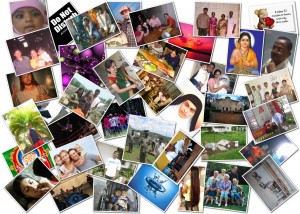CROWDSOURCING
User-generated Information for User‐centered Design
40 photos for $2 (my first experience with crowdsourcing)
Using Amazon’s Mechanical Turk, I posted a task for people to submit a photograph of what they do to live sustainably. I asked for 40 pictures, offering $0.05 each, and in 3 1/2 days – with no further effort on my part – I accepted their submissions and downloaded the pictures. The result was a mix of personal photos, providing a glimpse into peoples lives and how they perceive sustainable living.

The images collected from my first experience with crowdsourcing.
This efficient and affordable method presents promising opportunities to access the expertise, experience, and lives of people, to gather user‐generated inputs able to inform and inspire the design process.
Motivation
Through my experiences, I have developed a fervent appreciation for the value of users and the insight they can bring to a project. For many of the projects I have encountered, their successes and failures can (at least in part) be attributed to appropriate or inappropriate incorporation of users’ insights. The biggest failings stemmed from the absence of user information in the early stages of the design and development process, resulting in key strategic decisions that neglect users. For these reasons I strive to bring user information to the early stages of design.
Scientific Relevance
Users are a valuable source of information for the design process and their involvement can be an essential contributor to the success of a project. The ability to effectively and affordably access and incorporate user information into the early phases of the design process allows products, services, and systems to better fit the needs and contexts of users.
Problem Statement
Unfortunately, user involvement in the early stages of design ‐ where their insights can have the greatest impact ‐ is often limited. This is often due to a lack of ability or knowledge necessary to access rich user information or limited resources (time and money) early in the design process.
Starting Position
Crowdsourcing can provide fast and affordable access to rich user information for the purpose of informing and inspiring the conceptual phase of design.
Research Question
What are the benefits and limitations of crowdsourcing for informing the early phase of a user‐centered design process?
Goal
Provide a clear and accurate picture of crowdsourcing in a design context. And provide designers and user researchers with a framework and guidelines to use crowdsourcing as a tool for accessing users to inform the early phase of design.




